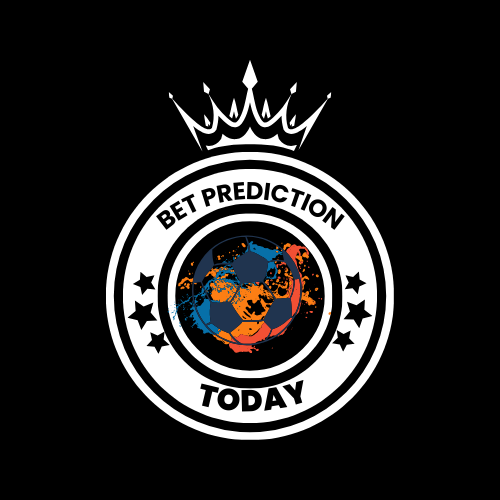Today’s Predictions-In a rapidly changing world, the ability to foresee future events has become invaluable. Predictions, driven by advanced technology and data analysis, have become an integral part of various industries. This article delves into the science behind predictions, their applications, and the tools that make them possible.
The Science Behind Predictions
Predictions are not merely fortune-telling; they are based on data, analysis, and algorithms. Whether it’s forecasting stock prices, weather conditions, or disease outbreaks, predictions rely on historical data and mathematical models. These models can identify patterns and trends, allowing us to make informed decisions.
Prediction Applications
Predictions have a widespread impact on numerous industries. For example, financial institutions use predictions to manage risks and make investment decisions. Weather forecasts, a daily necessity, rely on predictive models to warn us of upcoming storms. Healthcare professionals use predictions to diagnose diseases and develop treatment plans.
Real-life examples showcase the effectiveness of predictions. Take, for instance, the stock market, where algorithms predict price movements. These predictions inform traders and investors, enabling them to make profitable decisions. The gaming industry also relies on predictions to optimize user experiences and enhance player engagement.
The Tools for Prediction
To make accurate predictions, the right tools are essential. Data quality is a crucial factor in prediction accuracy. Inaccurate or incomplete data can lead to flawed predictions. Therefore, it’s vital to ensure data accuracy and reliability. Various software and tools, such as machine learning platforms and data analysis software, assist in processing and analyzing data effectively.
The Art of Data Collection
The quality of predictions depends on the data collected. Reliable data sources and accurate data collection methods are essential. Data can be collected from various sources, including sensors, surveys, and social media. The more diverse and reliable the data sources, the more accurate the predictions.
Machine Learning and Predictions
Machine learning plays a pivotal role in making accurate predictions. Algorithms process vast amounts of data to identify trends and patterns that are often too complex for human analysis. Some common machine learning algorithms used in predictions include decision trees, regression analysis, and neural networks.
The Role of AI
Artificial intelligence (AI) and predictions go hand in hand. AI can process massive datasets and make real-time predictions. For instance, AI-driven chatbots predict customer needs and provide personalized responses. AI is also used in image recognition, voice recognition, and autonomous vehicles, all of which rely on predictions for decision-making.
Predictions in Finance
The financial industry heavily relies on predictions. Stock market predictions inform traders about potential market movements. Risk management strategies are built on predictive models. Investment decisions, retirement planning, and asset allocation all benefit from accurate financial predictions.
Predictions in Weather Forecasting
Weather forecasts, a daily part of our lives, are the result of extensive predictions. Meteorologists use data from satellites, weather stations, and ocean buoys to create models that predict weather conditions. These predictions are essential for disaster preparedness and planning outdoor activities.
Predictions in Healthcare
Healthcare is another field where predictions are making a significant impact. Predictive analytics can help healthcare professionals identify patients at risk of certain diseases. Additionally, it aids in resource allocation, optimizing hospital operations, and improving patient outcomes.
Predictions in Sports
Sports enthusiasts and professionals also rely on predictions. Sports analytics use data to predict player performance, game outcomes, and strategies. Betting platforms provide odds based on predictions, allowing bettors to make informed choices.
Ethical Considerations
While predictions offer significant benefits, they also raise ethical concerns. Bias in data can lead to biased predictions, which can have real-world consequences. Additionally, privacy concerns arise when personal data is used for predictive purposes. Transparency in the prediction process is essential to address these ethical issues.
The Future of Predictions
The future of predictions looks promising. Advancements in technology, including quantum computing and more sophisticated AI, will lead to more accurate and timely predictions. Challenges will also arise, such as the need for better data security and ethical guidelines. Nonetheless, predictions will continue to shape our world.
Conclusion
Today’s Predictions-Predictions have become an integral part of modern life. They impact finance, healthcare, weather forecasting, sports, and more. By harnessing the power of data analysis, algorithms, and AI, we can make informed decisions and shape our future.
FAQs
- What is the difference between prediction and forecasting? Predictions involve using data and models to anticipate future events, while forecasting is a specific type of prediction often associated with weather and financial markets.
- How accurate are today’s predictions? The accuracy of predictions varies depending on the data quality, model accuracy, and the specific domain. In many cases, predictions can be highly accurate.
- Can predictions be used for long-term planning? Yes, predictions can be used for long-term planning, but their accuracy tends to decrease the further into the future they extend.
- What industries benefit the most from predictions? Finance, healthcare, and meteorology are among the industries that benefit significantly from predictions.
- Are there any downsides to relying on predictions? Ethical concerns, data privacy, and bias in predictions are potential downsides. It’s important to address these issues to ensure responsible use of predictive technologies.
